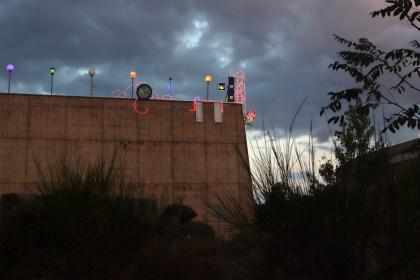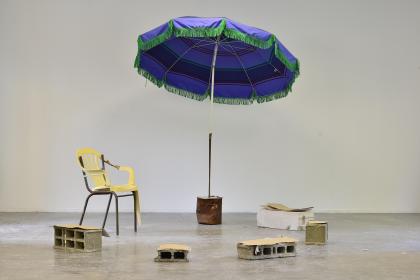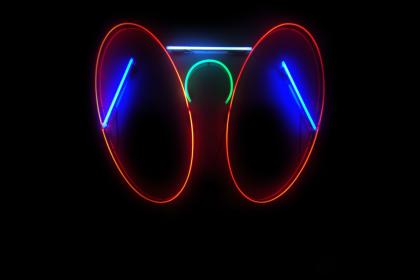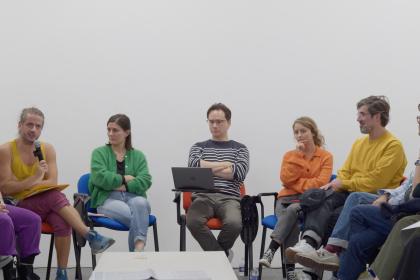The new commercial cemetery
Pedro Morais
What happens to the streets of a city when we dissolve the opposition between real life and virtual life? When geolocation changes our spatial references and consumption choices, transforming a walk into information, what purpose will road signs, signs, and even stores soon have?
“While visiting small French towns, I have often been surprised to discover abandoned shopping streets with life-size photos pasted on the windows, depicting their own past activities, often enhanced in 3D. These sort of utopias of everyday life give us a glimpse of a commercial life that no longer exists,” says Rémi Groussin. “During my residency in Nice, when I saw the dark neon sign of a cassette and DVD film store that had gone out of business, probably due to new downloading practices, I felt the need to seize this new commercial cemetery.”
He thus collected illuminated signs, many of which depict eyeglasses, highlighting the contrast between this optical correction tool and its outdated support. While neon has now become a classic in art, in his work, it is more of a remnant of cities transformed by turn-of-the-century consumption. The artist had previously restored pinball machines from the 1960s-70s, those before the transition to fully electronic ones, to expose their mechanics: an endless game where one never wins money because it is impossible to beat these new machines that Rémi designed with system glitches. And when he recreates on a human scale a typical ancient ruins setting found in aquariums, there is a sinister irony: to prevent the fish from falling into depression, we make them wander in our civilization submerged by the rising oceans.




